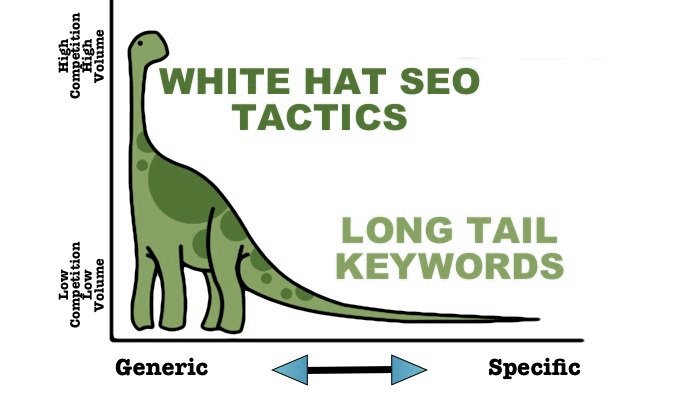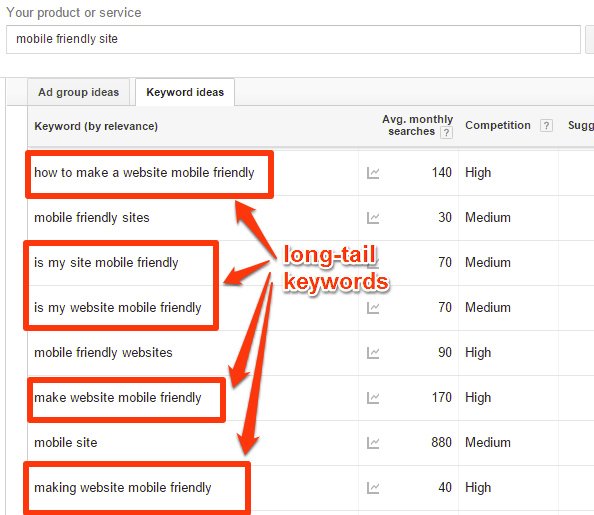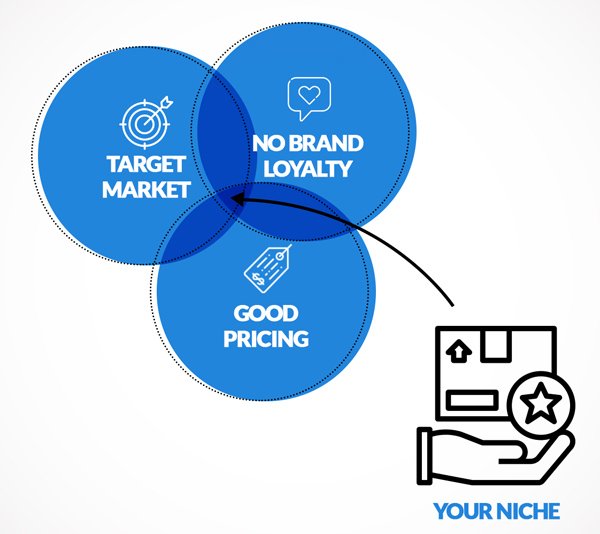Subscribe Our Newsletter
Subscribe to our mailing list to get the latest updates straight in your inbox.

Enjoyed the Read?
Don't miss our next Article!
Posted By > Amrit Dubey > 09 January 2019
Sure you have tried multiple ways to improve your contents search engine optimization, but have you tried the long-tail keywords?Using popular keywords to optimize a content certainly works and has its benefits, but there remains one unsolvable problem. When a contentis enriched with popular keywords it has to compete with other contents with similar keywords for its ranking.
For instance, if your content is about an online furniture store, and you’re using highly searched for keywords like “wardrobe”, “kingsize bed”, “dining table price” and others, do you think your competitors in the market aren’t doing the same? Well, they are and here begins the problem. There is nothing in your content that will make Google pick it over the others, so far as keywords are concerned.
So when the primary motif of a blog or a website is to increase traffic, there are other lesser known roads that can be taken to reach just where one wishes to be. Here comes in the long-tail keywords. Before I tell you how to pick the correct long-tail keywords, and how exactly can they send the traffic skyrocketing, here are a few things that you need to know!
What are long-tail keywords?

What are the perks of such keywords, you ask? Well, you would be astonished to know that studies show a little more than 95% of the searches contain these keywords. To put it simply, 95% of Google searches tend to be very particular and they aren’t exactly popular.
To understand long-tail keywords better, let us take a look at the picture below, which is a graph that shows the varying popularity and search volume of different keywords.
While the word homes have a very high search volume, the “Homes for sale in Las Vegas Under $300,000 with a pool” has very few” because it’s very very specific. Also, the graphical representation goes on to explain why the long-tail keywords are called by that name. It’s because they progressively keep looking like an elongated tail.
The privilege of using long tail keywords is that it would help the potential buyers to locate exactly what they are looking for. Simultaneously using multiple longtail keywords would increase traffic. In addition, it would set your website aside from other competitors’ because your’s shall be yielding the answer to searches that your competitors wouldn’t be able to answer. So it’s all good when you’re using “furniture” for a keyword. But, using “mahogany wood European furniture” might just happen to optimize your content.
Head theme vs long-tails
Every website or blog has a particular theme which it considers to be the central theme. For a blog, it can be traveling or homemade food or DIY art. For a website, we can continue to use the example of the furniture. So the tendency usually is to generate keywords that are very obviously related to the head theme of the content. This, however, tends to limit the traffic. People who search for the head topic might also be searching for related topics, and your attempt should grab their attention nevertheless.
It would be easier to understand with an example. A blog on south Indian homemade food shouldn’t just focus on the keywords “homemade food” but must also try out its variants like “homemade idli” or “homemade vada”. These alternative keywords can be seen as longtails, keywords that are very specific and less searched for. Nevertheless, people who are looking for answers shall find your page and here you get the scope to redirect their attention to your main page.
The way to redirect attention is by using links to the main page. This should be kept in mind that the links should always be from the ancillary pages to the main page which offers the actual service that the website aims to sell. A person who is pleased with the informative content surrounding the long-tail keyword might be tempted to check out the other links and there you stand to have an improved traffic.
This way, one can draw the attention of the viewers looking for the main topic on offer, but also of those who are looking for similar but related things.
Does a long-tail keyword have to be super long?
Not necessarily!
Before we talk about that, let’s try our hands at some myth-busting. It’s a prevalent myth that short search words tend to fetch more results than the longer ones. In some cases, this might hold true, as we can see from the graph used above. But practically speaking, this doesn’t always holdgood when people are looking for particular stuff. For instance, the words “dermatologist” is less likely to generate more results compared “dermatologist clinic in Delhi”. Firstly, the second set of words will possibly fetch more search results, and more importantly, they’ll fetchsearch results that would be more useful for the person who’s searching. Which goes on to show that the length of the keyword is not directly proportional to its popularity.
Does this mean short phrases can be unpopular/ long-tail keywords too? Yes, they can be! One just has to pick the right words based on a bit of research. The takeaway from this whole discussion should be this: the length of the keyword is redundant.
How to pick the long-tail keywords?

For instance when you type “mahogany furniture”, you might find suggestions like “mahogany furniture online”, “mahogany furniture bedroom”, “mahogany furniture price”, “mahogany furniture color scheme”, and others. One should start picking the keywords from the bottom. The lower they are in the suggestion, the less popular and more specific they tend to be.
This can be a good way to come up with the long-tail keywords; however, it requires a lot of manual work and time. This is 2018, and no one’s into that anymore. So enter option 2.
How do the generators work? Well, it’s very simple: you enter one seed and ask the generator to produce results based on that. Youseed can be our recurring “mahogany furniture”. Since we are going for long-tail keywords, one must watch out for low volume results. So in the column for volume, set 0 to 1000 (or whichever number you thin would be appropriate for you).
For more rare results, one can increase the number of keywords. Setting the minimum number of keywords to 8 will generate results that are totallyspecific, unpopular, and useful.
They know all about long-tail keywords and can use them more prudently in the content. This happens to maximize the chances that your page will see improved traffic in the future.
Why are long-tail keywords profitable for your website?

Like already discussed, everyone in the same line of business shall be using the common head keywords, so what shall be your way of getting g ahead of all? Having a specific long-tail keyword helps to attract attention even when other sites have the same head keyword. The precision of the long-tail keyword grabs attention and generates traffic better than the popular one-word keywords.
Research shows that while the top 10% of most visited pages show a conversion rate of merely 11% the long-tail keywords is likely to fetch upto 30% conversion. Now for a business that has started operating only recently, an overnight skyrocketing of the conversion cannot be expected. However, what really does occur Is that the keywords solidly the CRO funnel via the organic search. Nevertheless, the impact shall be visible.
If someone’s trying together information about something, by no means will they type just a word or two and hope to find answers. People have the tendency to type whole questions, the way they post queries in Quora. Long-tail keywords are the ones capable of meeting these queries head on, and therefore, it is certain to draw traffic to the website.
If we go back to the example of the furniture, no one can be expected to just type the word furniture but they are more likely to type something like “buy Jaipuri wooden furniture online”. There your long-tail keyword can do its job.
The latest hummingbird upgrade of the Google algorithm has changed things to focus on exact words and phrases. Therefore, the quality or relevance of the content that is being generated by the organic search is based on the presence of very very specific keywords. One could say that Google is attempting to come up with exact results for the searched words. The long-tail keywords work wonderfully with the upgraded algorithm and therefore it is increasingly being used by the SEO experts.
Enter Google Assistant, Amazon Alexa, and their likes. It is rather evident that more and more people are opting for voice searches when looking for simple things on the phone. It is quite convenient, and anyone who is far-sighted can see that the voice searches are things from the future; the traditional method of typing eventually has to give way to voice searches because they are faster, requires less effort, and convenient in multiple ways.
One can use the voice search while doing something else, one can use the voice search when they are in a car and aren’t supposed to use their phones. We can take it for granted that voice searches are going to take over in the near future.
Now a significant aspect of long-tail keywords is that they are highly competent with voice searches. The tools like google assistant or Alexa attempt to find the perfect search result at once, which is why they look deep into the content, going for specific details. Here, the long tail keywords stand at a benefit.
In addition to this, take a moment to consider how people actually search for things when they are using voice searches. Ideally, a person would say something like, “Google assistant, find what are the best ways to improve SEO ranking” instead of using small popular phrases like “SERP” or “SEO ranking”. So the command perfectly matches with a possible long-tail keyword, and hence it is evident why using long-tail keywords would progressively improve the traffic generated by a website.
Let’s take a look at the whole business from a different perspective. A person who is searching for something on the internet is looking for information. While using the popular keywords, you are sure to swim up in the search results, but you shall be offering might not be of any use to the visitor. The long-tail keywords, specific as they are, the content developed around them also tend to be more informative. Therefore, when searchers find the exact results for themselves, the content goes on to provide them with a better idea about the thing they want to know. The primary motif of every search engine is to bring perfect information to the searcher, and with long-tail keywords, this becomes possible!
Therefore, the long-term keywords can be said to come with their own sets of privilege that can totally benefit a business when used in the right way.
Let Google know that you’re a top brand in your niche

A website that has multiple pages is considered to be more substantial by Google. The search engine assumes that the more content a website has to offer, the more appropriate it will be as a search result. This automatically goes on to positively affect the organic search ranking of a webpage.
The multiple pages would each require to be developed by concentrating on a particular keyword. The content can more or less be same, discussing the products or services offered by the said website. There must be a different title, meta description, and headers for every page. The keywords must be integrated in a proper manner.
The idea is to give the three popular keywords a miss and go for 20 or even a 100 long-tail keyword, generating more and more pages in the process.
Aim to attract buyers and not viewers
What’s the point of having a million people visit your page when not a single one of them goes on to buy a product? The ultimate purpose of every venture is to make a sale, and even with high SEO ranking, sometimes that purpose isn’t fulfilled. One might argue that an increased traffic helps to improve the ranking, but there are two things that they need to consider:
First, Google algorithm rates a site based on the time spent the viewers on the website. If a keyword leads viewers to your page, but they figure you aren’t offering precisely what they are looking for, they leave within a few seconds, and so this doesn’t really go on to improve SEO ranking.
Second, even for argument's sake if one considers that the SEO ranking is soaring, what’s the point of it when one cannot make sales?
So the whole agenda should be to attract buyers and not merely viewers. Content developed around specific long-tail keywords are sure to be rich in information about the same. Therefore, as we mentioned above, it brings more value to the searcher, and chances are they will spend more time on the page, reading through the content to find their answers. A page that proves to be of value has better chances of converting a viewer into a buyer.
People searching with specific keywords are looking for things to buy, and find fewer results because of the specification. This is your one chance to get them to visit your site and see your product before they go scrolling onto a competitors page. There is no point in having 2000 “viewers” a day (with popular keywords). It is better to have 200 viewers out of which 10% atleast convert into “buyers”. And it has been proven that long-tail keywords are better at fetching “buyers” compared to popular ones.
So now that you know all about long-term keywords, you must be able to see that they are a way to success in the world of virtual ranking. Go on and choose the right long-term keywords for yourself using a keyword generator, or for more effective results consult digital marketing experts and start creating your pages! Look luck with the ranking, may you soar high and reach the zenith of success!

Amrit Dubey is the founder of the digital marketing company JSM Digital Marketing based in Delhi, India. He’s been working in digital marketing since 2009, focusing primarily on SEO. You can find him on Twitter.




Our Guildlines: FAQ |Privacy Policy |Terms & Conditions |Refund/Cancellation Policy |Legal |Disclaimer |Sitemap